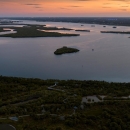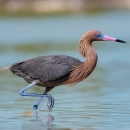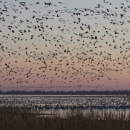Laws and Regulations
Beginning August 15, 2021, anyone who wishes to solicit or conduct commercial activities within the boundaries of Cape Romain National Wildlife Refuge (Refuge) must apply for a Special Use Permit (SUP) from the U.S. Fish and Wildlife Service.
A Special Use Permit (SUP) is required for commercial recreational activities in refuge waters. If you are not sure whether you need a SUP, please call the refuge headquarters office at (843) 928-3264.
If a SUP is issued, the permittee must comply with all special conditions attached to that SUP.
Reminder: The entire Refuge is closed from sunset to sunrise, and specific areas within the Refuge are subject to periodic closures. These closures take precedence over any authorization contained in a SUP.
The U.S. Fish and Wildlife Service issues permits under various wildlife law and treaties at a number of offices throughout the country. Permits enable the public to engage in legitimate wildlife-related activities that would otherwise be prohibited by law. Service permit programs ensure that such activities are carried out in a manner that safeguards wildlife. Additionally, some permits promote conservation efforts by authorizing scientific research, generating data, or allowing wildlife management and rehabilitation activates to go forward.
Permits are handled by permitting programs in International Affairs (Management Authority), Endangered Species, Law Enforcement, and Migratory Birds.
All state and federal regulations apply on the Refuge.
General regulations specific to Cape Romain NWR include the following:
- The refuge is open during daylight hours only, from sunrise to sunset.
- Marsh Island and White Banks Islands are closed to protect nesting birds from February 15 - September 15.
- Entering any area posted with area closed signs is prohibited.
- Camping is prohibited. Camping facilities are located nearby on the Francis Marion National Forest. Call the Sewee Center at (843) 928-3368 or Francis Marion NF at (843) 336-2200.
- Shell collectors are allowed to take one small bag of unoccupied shells. Collection of shells for commercial purposes is prohibited.
- Bicycles are only allowed on the service roads on Bulls Island. Riding bicycles on the beach or on designated hiking trails is prohibited.
- Fishing from or into the service area docking facilities on Bulls Island is prohibited.
- Pets are not allowed on refuge islands or on the pier at Garris Landing. Pets are allowed on boats in refuge waterways.






